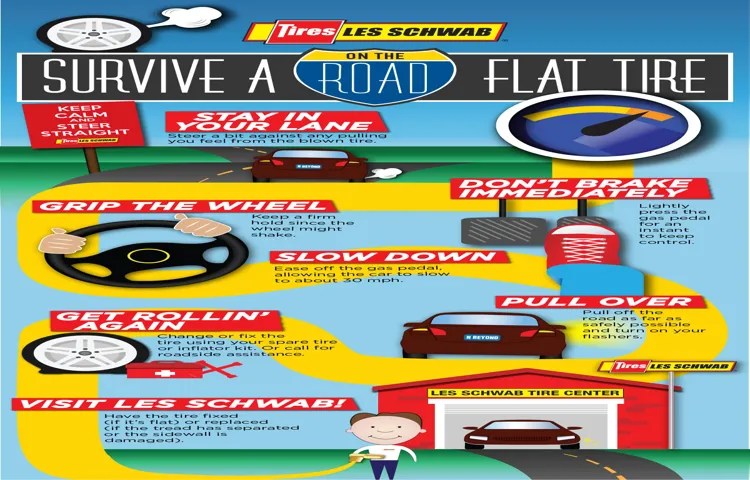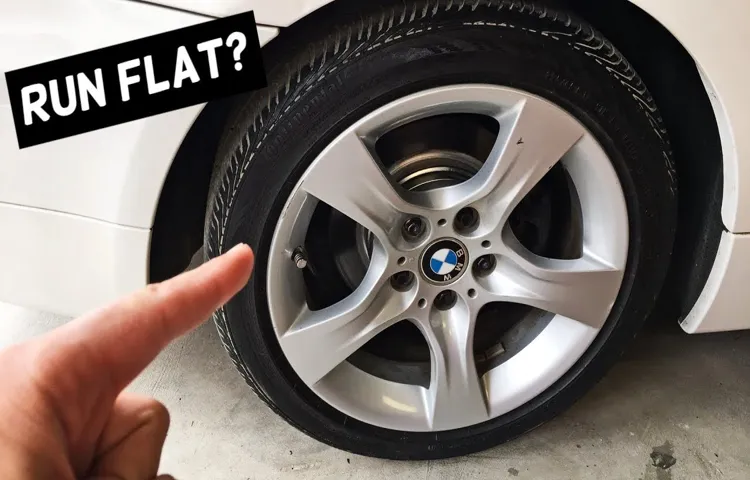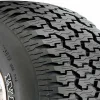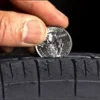Have you ever been driving along, minding your own business, and suddenly feel like something’s not right with your car? You can’t quite put your finger on it, but there’s a strange sensation coming from somewhere. More often than not, that sensation is caused by a flat tire. But how can you tell for sure if you have a flat tire, and what should you do about it if you do? In this comprehensive guide, we’ll cover everything you need to know about determining whether or not you have a flat tire.
We’ll explore the signs and symptoms of a flat tire, how to check your tire pressure, and what to do if you do indeed have a flat tire. With this guide in hand, you’ll be able to confidently assess whether or not you have a flat tire and take the necessary steps to get back on the road safely and quickly. Whether you’re a seasoned driver or a new one, it’s essential to know how to recognize and fix a flat tire.
Not only can it save you time and money by avoiding a potential breakdown, but it can also prevent a dangerous situation on the road. So, let’s dive in and learn how to tell if you have a flat tire!
Table of Contents
Introduction
Have you ever experienced a bumpy ride while driving, or noticed your car pulling to one side? It could be a sign that you have a flat tire. So, how do you know if you have a flat tire? There are a few tell-tale signs to watch out for. Firstly, if you hear a flapping or thumping noise while driving, it could mean that your tire has lost pressure and is being flattened by the weight of the car.
Another sign is if you feel a vibration in the steering wheel or seat, as this could indicate that there is uneven wear on the tire. You can also visually inspect your tires for any signs of deformation or damage. If you notice any of these signs, it’s important to pull over to the side of the road as soon as it’s safe to do so and assess the situation.
Driving on a flat tire can be dangerous and cause further damage to your vehicle. Remember, prevention is key, so regularly checking your tire pressure and inspecting your tires for damage can help avoid the inconvenience of a flat tire on the road.
Why Is It Important to Check for a Flat Tire?
Checking for a flat tire may seem like a hassle, but it’s crucial for maintaining your car’s overall safety and performance. Imagine driving on a tire with low pressure or worse, a completely deflated one. Such situations could result in a loss of control over your vehicle, causing accidents and endangering lives.
Regularly checking for flat tires could save you from disasters that could result in injuries, fatalities, and costly repairs. It’s essential to inspect your tires’ pressure, condition, and tread depth at least once a month and before long trips. Paying attention to your car’s warning signs, such as vibrations and unstable steering, can give you a heads up on potential tire issues.
Don’t overlook the importance of checking for flat tires. It’s a simple task that can save you from catastrophe.

Common Signs of a Flat Tire
Introduction: Tire punctures are one of the most common problems drivers face on the roads. A flat tire is frustrating and can quickly ruin your day, especially if you are in a rush to get somewhere. It’s essential to keep an eye out for common signs of a flat tire to avoid dangerous situations, such as a blowout on the freeway.
In this blog, we will discuss the various signs that indicate a flat tire and how you can address this issue before it becomes a more significant problem. So, let’s dive in and explore what to look for so that you can keep yourself and others safe on the road. The keywords naturally used: flat tire, punctures, common signs, dangerous, blowout, freeway, address, issue, significant problem, dive in, explore, safe on the road.
Method One: Visual Inspection
If you suspect that your tire might be flat, there are a few methods you can use to confirm your suspicion. The first method is a simple visual inspection. You can start by looking at your tire, and if it appears to be lower and flatter than the other tires, it’s likely that you have a flat.
You can also look for any punctures, holes, or tears in the tire that could be causing the issue. Additionally, if you notice that the tire is bulging or appears to be coming off the rim, this is another sign that the tire is flat. Once you’ve completed your visual inspection, you should also check the tire pressure with an accurate tire pressure gauge.
If the pressure is low, but there are no visible signs of damage, you may have a slow leak. In either case, it’s best to take your vehicle to a mechanic or tire shop to have it inspected and repaired.
Step One: Look at Your Tires
When it comes to maintaining your tires, the first step is to give them a visual inspection. This means taking a good look at the tread, sidewalls, and overall condition of the tire. Start by checking the tread depth, which is essential for maintaining proper traction on the road.
You can do this by using a tread depth gauge or simply placing a penny into the grooves with Lincoln’s head facing down. If you can see the top of Lincoln’s head, it’s time to replace your tires. Next, examine the sidewalls for any cracks, bulges, or cuts.
These can indicate a weakened tire and should be addressed immediately to ensure your safety on the road. Finally, take note of any worn spots or irregular wear patterns, which could be a sign of alignment issues or other problems. By giving your tires a thorough visual inspection, you can catch any issues early and prevent more significant problems down the road.
Step Two: Check for Punctures and Cuts
When it comes to checking your tires for punctures and cuts, there are a few methods that can come in handy. The first method is a visual inspection, which involves taking a close look at the surface of your tires to identify any visible damage. This is a simple and effective way to spot any punctures, cuts, or other forms of damage that may be affecting your tires.
It’s important to inspect both the tread and the sidewalls of your tires, as damage can occur in either area. If you notice any cuts or punctures that are deeper than 1/4 inch, it’s best to have a professional inspect the tire further to ensure it is safe to drive on. By regularly checking for punctures and cuts, you can identify and address potential issues before they become major safety hazards on the road.
Step Three: Monitor Air Pressure
When you’re monitoring your tire pressure, there are a few methods you can use. One of the easiest is visual inspection. This simply means taking a look at your tires to see if they look low on air.
You don’t need any special tools or equipment – just your eyes! Start by standing a few feet away from your car and looking at each tire. They should all look round and full. If one tire looks flatter than the others, it might need some air.
You can also use your hands to feel the tires – they should feel firm to the touch. If one tire feels softer than the others, it’s a good idea to check the pressure. Keep in mind that this method isn’t as precise as using a tire pressure gauge, but it’s a quick and easy way to check your tires in a pinch.
Remember to check your tire pressure regularly to ensure your safety on the road!
Method Two: Driving Inspection
If you’re not sure whether you have a flat tire, don’t panic yet! There is an easy way to find out. Simply conduct a driving inspection. This involves paying attention to any changes in the way your car handles while driving.
If you notice that your steering wheel pulls to one side, or if you hear a thumping sound, your tire might need air or could be flat. Another red flag is if you feel like your car is dragging or the wheels are wobbling. These are all telltale signs that your tire could be in trouble.
In case you’re still unsure, you can always do a visual inspection by checking your tire for bulging, cuts, punctures, or cracking. A driving inspection is a quick and easy way to know if you have a flat tire.
Step One: Listen for Unusual Sounds
As a driver, it’s important to regularly inspect your vehicle to ensure it’s in good working order. One effective method for doing so is called the “driving inspection.” Essentially, this involves taking notice of how the car handles and sounds as you drive it.
For example, if the steering feels loose or the brakes don’t seem as responsive as usual, these could be signs of a problem that needs attention. Additionally, if you hear any unusual sounds like squeaking or grinding, these could also be indications that something is off. By staying attentive to these cues during your daily drives, you can catch potential issues early on and address them before they become major problems.
So if you want to keep your car in tip-top shape, start incorporating driving inspections into your routine.
Step Two: Observe Your Car’s Handling
When it comes to assessing your car’s handling, a driving inspection can be a helpful method. Start by finding a stretch of road where you can drive at a steady speed, and pay attention to how the car responds to your inputs. Take note of any vibrations or pulling to the left or right, which could indicate problems with tires, alignment, or suspension.
You should also test the brakes by applying them gently and seeing how smoothly the car slows down. If the car pulls to one side or you hear any strange noises, it’s time to get them checked out. Additionally, be mindful of how your steering wheel feels.
If it’s loose, overly tight or vibrates while driving, it could be a sign of a problem with your steering mechanism or wheels. By conducting a thorough driving inspection, you can ensure your car is in top condition and avoid any potential safety hazards on the road.
Step Three: Pay Attention to Warning Lights
When it comes to taking care of your vehicle, paying attention to warning lights is crucial. These lights are the car’s way of telling you that something isn’t working properly or requires immediate attention. Ignoring these lights could lead to more significant issues down the road and cost you more money in repairs.
That’s why it’s crucial to keep an eye on them, especially during long journeys. One way to check for warning lights is during a driving inspection. During this inspection, you can check your car’s dashboard for any lit-up indicators.
If there are any lights on, it’s best to pull over as soon as you can and check your car’s manual to understand the issue. By doing this, you can protect your vehicle and ensure it stays in top running condition. Keyword: driving inspection.
Conclusion
In conclusion, knowing if you have a flat tire is as easy as ABC – Air, Balance, and Condition. Make sure to regularly check the air pressure of your tires, ensure they are balanced, and inspect for any signs of wear and tear. And if you find yourself driving with a mysterious thumping sound, pulling to one side, or a sudden decrease in fuel efficiency, it might just be time to pull over and check for a flat.
Remember, prevention is always better than a surprise blowout on the highway!”
FAQs
How can I tell if I have a flat tire?
Signs of a flat tire include the car pulling to one side, a thumping or vibrating sensation, or a sudden decrease in tire pressure.
What should I do if I suspect a flat tire?
Pull over to a safe spot and inspect the tire for damage or signs of deflation. If necessary, replace the tire with a spare or call for assistance.
How often should I check my tire pressure?
It’s recommended to check your tire pressure at least once a month, and before a long road trip.
Can I drive on a flat tire?
No, driving on a flat tire can cause serious damage to the wheel and impact the safety of your car.
How long can I drive on a spare tire?
Spare tires are designed for temporary use only, usually for up to 50 miles. It’s best to replace the tire with a new one as soon as possible.
What causes flat tires?
Flat tires can be caused by punctures from nails or debris, tire blowouts, or slow leaks from damaged valves or rims.
How can I prevent flat tires?
Regularly check your tire pressure, avoid potholes and debris on the road, rotate your tires regularly, and replace old or worn tires before they become a safety issue.



